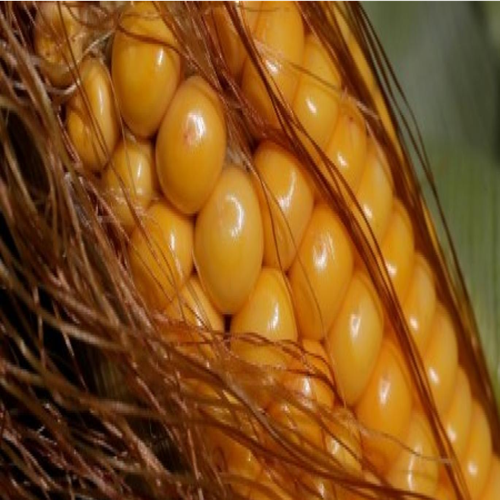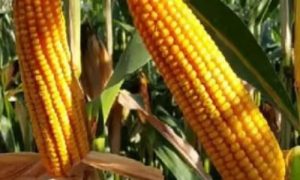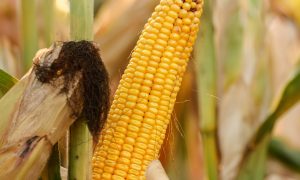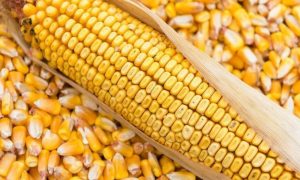Maize farmers reap benefits from SDGP maize project

For farmers who are beneficiaries of a Sustainable Development Goals Partnership facility (SDGP) project called Increased Maize Value Chain Efficiency in Rwanda, the fears of their crop being rejected by major buyers due to aflatoxins have been alleviated. SDGP Maize is a consortium under the public-private partnership model funded partly by the Netherlands Enterprise Agency (RVO) and partners including Africa Improved Foods (AIF), Agriterra, and Sight and Life who all joined efforts with the Rwandan government through its Ministry of Agriculture and Livestock to improve the maize value chain in Rwanda. According to information from its consortium, its realized objectives include the reduction of maize produce that was rejected due to high level of aflatoxin( The project runs from July 2019 to June 2024 and targets to reach 60,000 farmers organized in 64 maize cooperatives by providing them with services to increase maize productivity, and improve post-harvest handling for better access to the market. Additional realized objectives of the project include reduced post-harvest loss, increased farmer income through post-harvest loss improvement, and better prices, as well as cooperatives capacity-building on management, member commitment, governance, operations, among others. Marine Umukunzi, the Senior Cooperative Advisor at Agriterra Rwanda, and Project Manager on the side of Agriterra, stated that one of the main goals of the project was to increase farmers’ income by improving productivity and post-harvest handling. She said: “The project supported farmers to increase their yields, reduce post-harvest losses, connect with markets, and implement measures to tackle aflatoxin contamination. As a result, farmers were able to sell their produce at better prices.
Additionally, the project has focused on enhancing cooperative capacity-building efforts, which includes improving management, member commitment, governance, and operations, among other areas. “As Agriterra, we are in charge of capacity-building of the cooperatives, starting from providing management and, governance training, business development coaching, and also we support cooperatives to have their long-term strategies elaborated so that it’s clear where they would like to reach like in the coming three to five years.” She was speaking during an enhancing good agricultural practice (GAP) event held in Nyagatare District, on April 3, with a focus on setting up demonstration trials for minimum tillage techniques in agriculture within KABOKU cooperative. KABOKU is a cooperative of maize farmers in Umuvumba swamp. It is located in Nyagatare District and is one of the project beneficiaries. Scaling up market access for maize farmers The president of KABOKU, Wilberforce Ngabirano, said; “we have benefited a lot from this project especially the access of market of AIF.
Additionally, Agriterra helps us in training and capacity-building and trains the youth in making compost.” Augustin Kayiranga, a maize and soya cooperative coach in Eastern Province representing the project lead partner AIF at the event, commended the progress made by the cooperatives supported in the project, especially by pointing KABOKU as one of the role model cooperatives. He said that during farming Season A of 2023, AIF bought 931 metrical tones of maize from KABOKU which increased to 2,000 tons in the same Season of 2024 with the target of 3,000 tones at the end of the season since buying is ongoing.
He pointed out that AIF is ready to continue building a strong relationship and collaboration with KABOKU not only in farming but also as a business partnership because KABOKU is one of the cooperatives in Rwanda that supplies maize in quantity and quality compared to other cooperatives working with Africa Improved Foods Rwanda. With efforts led by SDGP partners, the project addressed post-harvest losses through proper handling of maize produce whereby the adoption of selling on cobs improved quality, according to the representative Sight and Life Rwanda. The minimum tillage agriculture technique trial was led by John Kayumba, the Rwanda Agriculture and Animal Resources Development Board (RAB) Nyagatare station manager.
He explained that minimum tillage agriculture technique contributed to the conservation of soil profile, texture, and health, which is replenished because of adding manure. Also, he noted, it improves soil moisture through mulching. On minimum tillage, Umukunzi said, the farming technique is in line with Sustainable Development Goals (SDGs) aimed to protect the environment and conserving land for current and future generations. She said that with the results of the trial, farmers will compare investments in minimum tillage to the ordinary farming practice, the differences in terms of yield performance, and the cost of production, before they use it. For Ngabirano, “this is a good technique because, with the current much tilling of land, it can result in a soil part that is rich in nutrients needed by a crop being placed deep where the crop cannot reach them, which reduces yield. So, I think adopting this minimum tillage technique can contribute to increased farm productivity.”
















